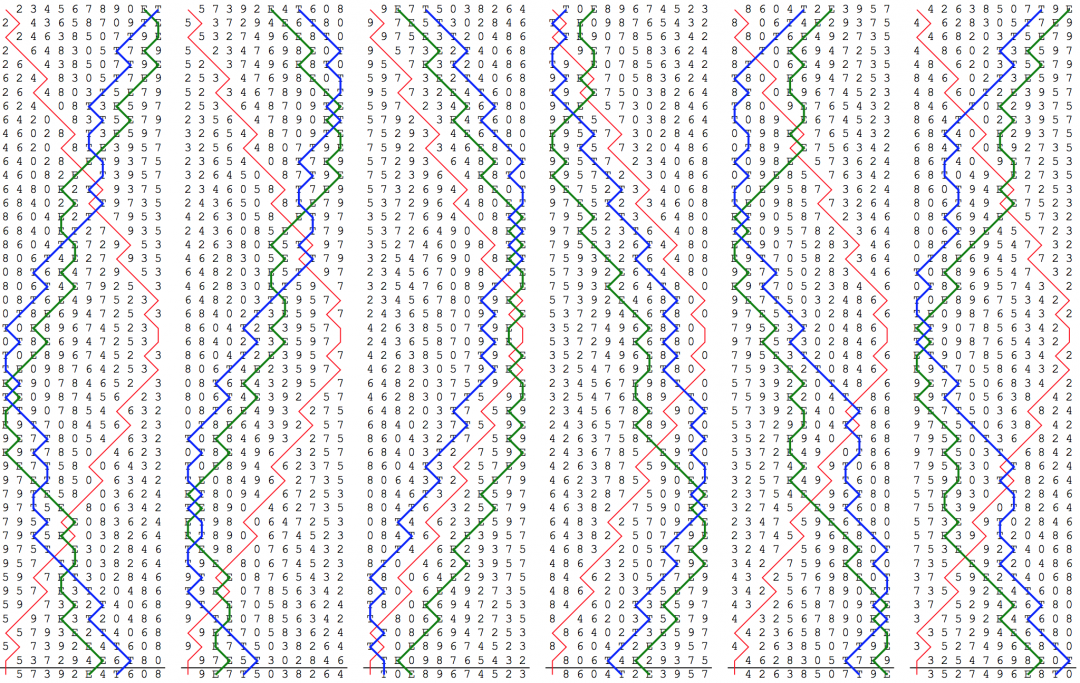After ringing a quarter of Cambridge Maximus in Handbell Stadium last Saturday, tomorrow we're going for Yorkshire. I've hardly ever rung it (although I do have a memory of an unsuccessful peal attempt in the mid-1990s) so I thought I'd better do a bit of practice with Mabel. I started on the tenors, without any preparation except for remembering that the tenor has to do 7-8 places because that's what it does in Cambridge. My only other preconception was the idea that Yorkshire is more difficult than Cambridge, which is what we've found for Royal because the dodges are not synchronised above and below the treble.
So, off I went, and it was really easy! It just seemed to unfold naturally without any surprises. Here are the lines for the first half of the course (diagram from Composition Library), and then I will comment on each lead.

- Lead 1: 11th and 12th place bells. Tumbling places in both halves of the lead, just like Major, and coursing in between them. It's enough to remember that 12th place bell starts with 7-8 places, and has to do 3-4 places up in order to become 9th place bell.
- Lead 2: 7th and 9th place bells. Again two sets of tumbling places, and it's enough to remember that 9th place bell does 9-10 places down and then 7th place bell does 3-4 places up to become 3rd place bell.
- Lead 3: 3rd and 5th place bells. The first half lead is easy, but the second half lead is one of the most difficult parts of the course because the bells are on opposite sides of the treble and therefore ring out-of-step treble bob hunting. The same thing happens in Major but it's less noticeable because the out-of-step part is much shorter.
- Lead 4: 2nd and 4th place bells. Out-of-step treble bob hunting even though both bells are below the treble. 4th place bell is forced to stop in 7-8 places up because 2nd place bell does a triple dodge in 9-10. The work in this lead is the same as in Major, with some additional treble bob hunting for both bells.
- Lead 5: 6th and 8th place bells. For the first 16 changes, the bells are ringing in exactly the same places that they would in Major, but of course in Maximus it isn't the symmetrical lead. I knew that 6th place bell should do 9-10 places up, but I didn't have a clear idea of which places 8th place bell would do. However, stopping in 5-6 places felt right, and in fact the 5-6 and 9-10 places have the same relationship as the 5-6 and 1-2 places (better known as frontwork) in the first half of the lead.
- Lead 6: 10th and 12th place bells. This is the symmetrical lead. I still remembered that 12th place bell does 7-8 places, and I also remembered that 10th place bell does 3-4 places, the same as in Royal. These sets of places are in the same relative positions as both pairs of places in the previous lead.
So there we are - not too bad, although I expect the other pairs are less easy. Let's see what happens in the morning.